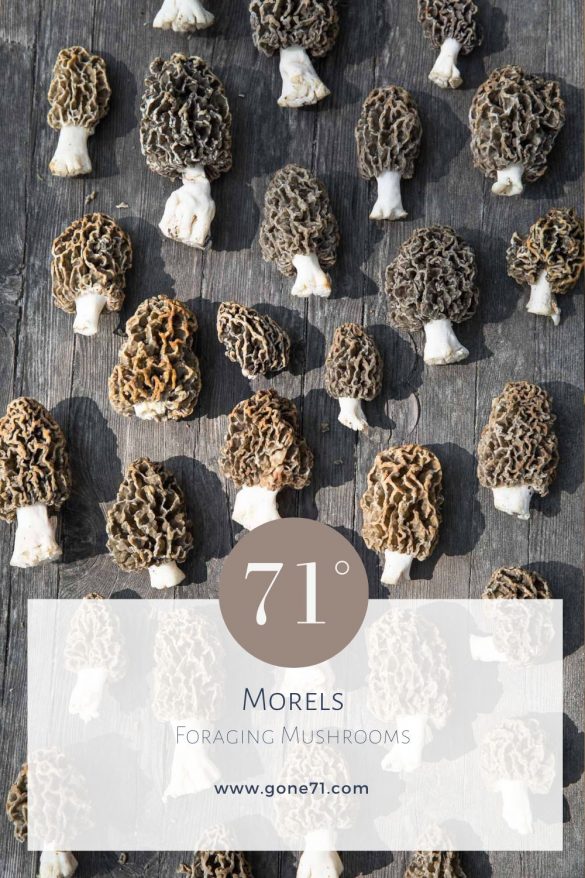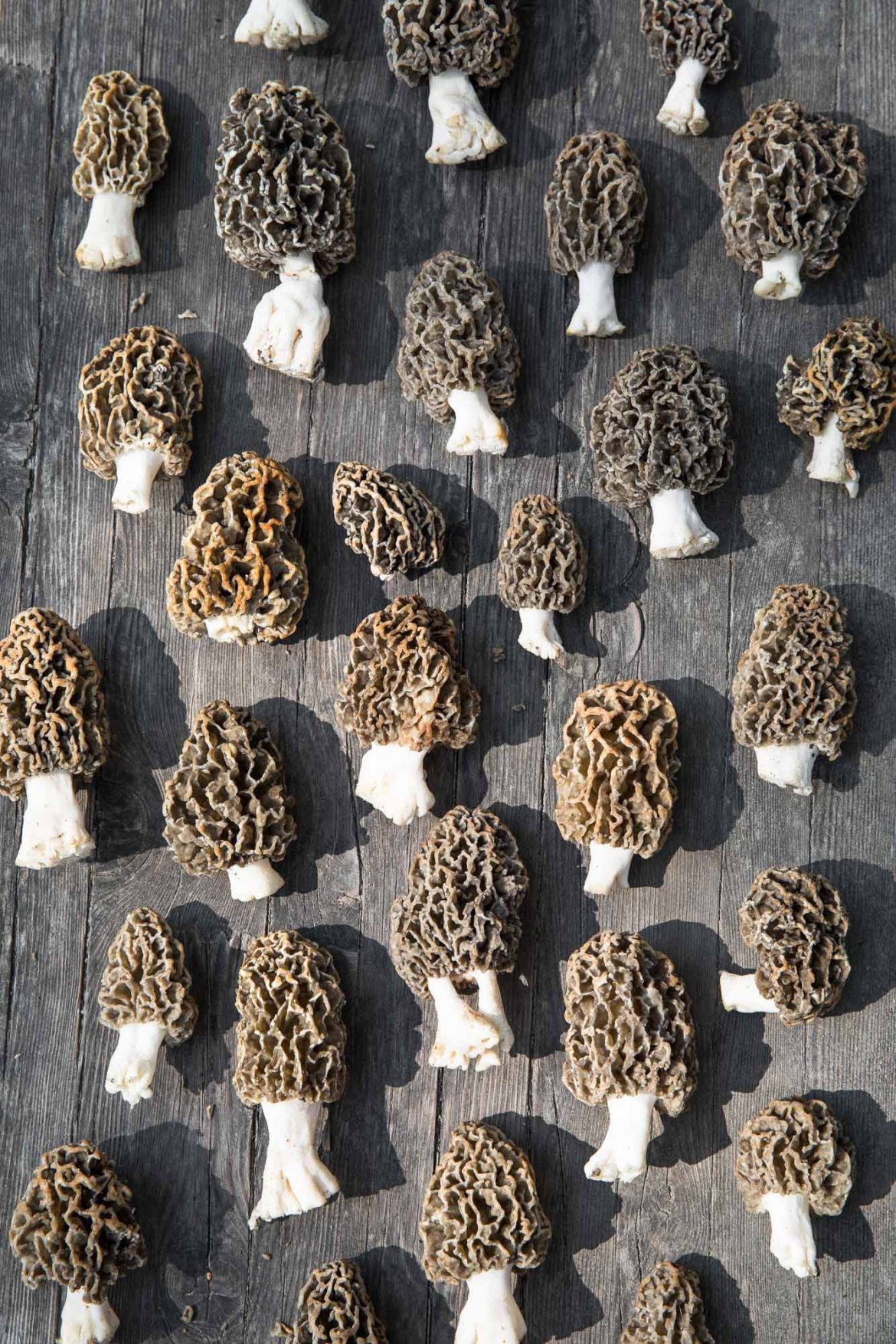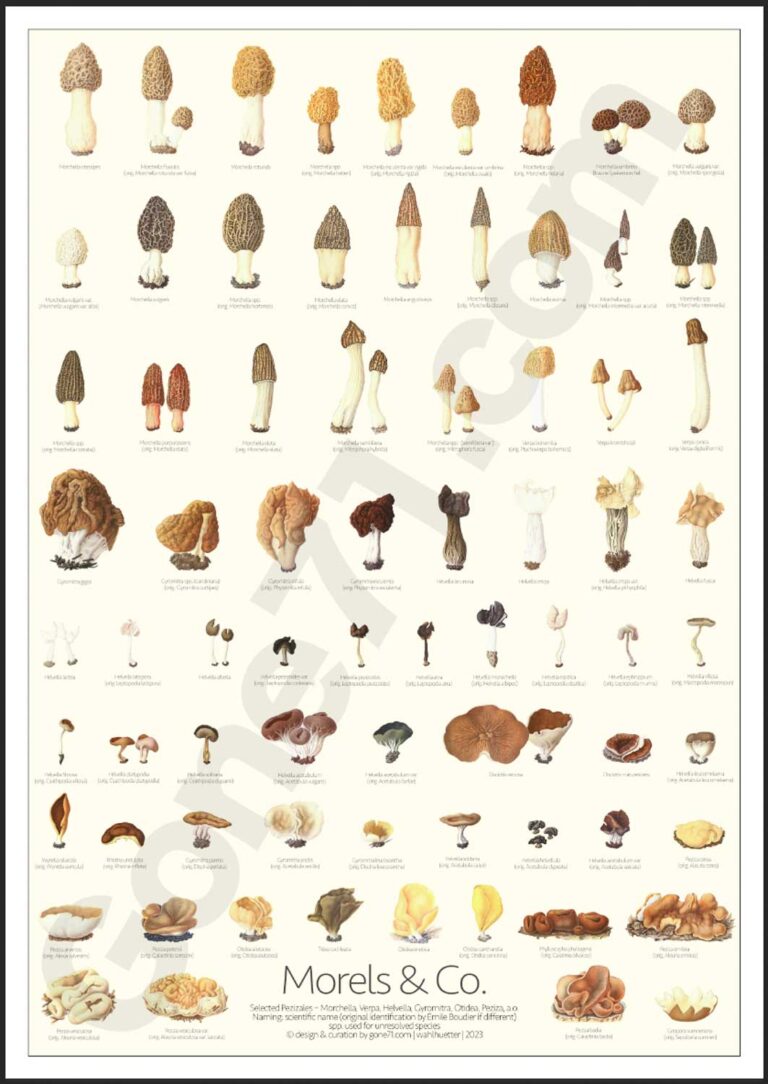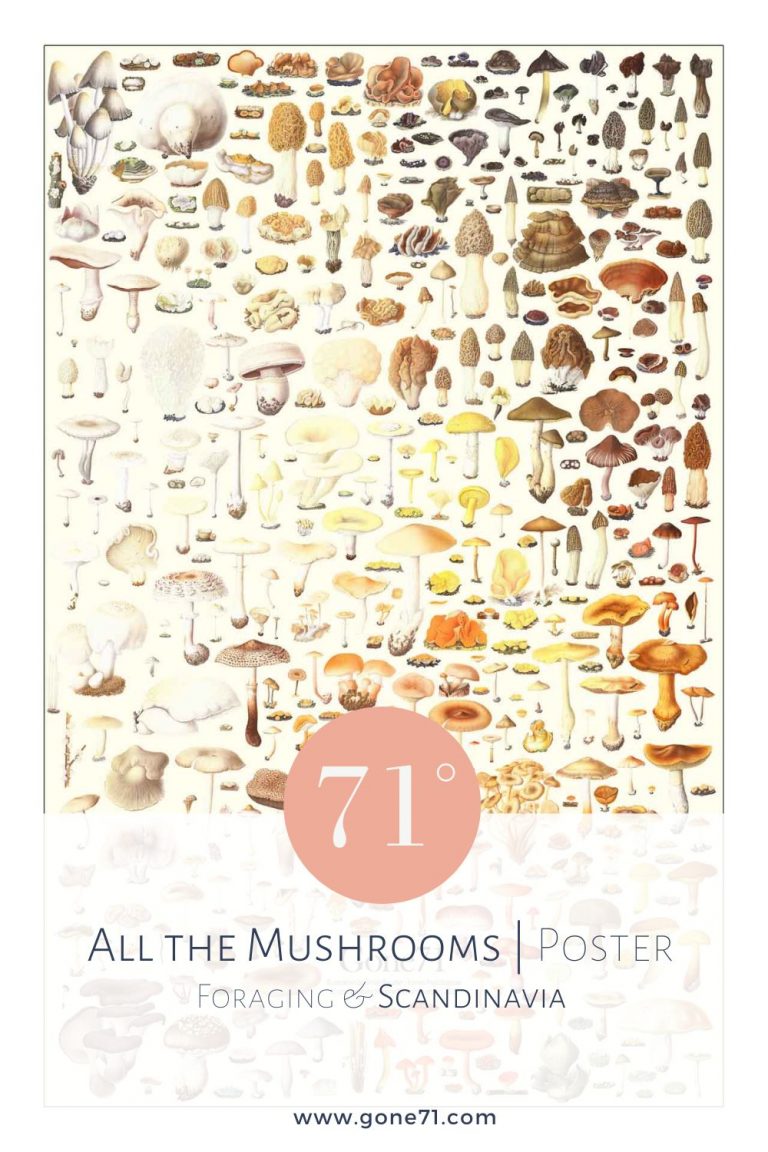swe.: Rund toppmurkla | nor.: Rundmorkel | fin.: Pallohuhtasieni | dt.: Speisemorchel
You grow and gain weight like the morel in May (Heronymus von Bock, 1546)
Morels are among the most coveted and also most expensive edible mushrooms. They were already known to the Greeks and Romans. They are among the first mushrooms to recapture the forests after the barren winter months. As classic heralds of spring, they like to accompany indicator plants such as snowdrops, lilies of the valley, cowslips or wild garlic. Depending on the weather and location, the first specimens can be harvested as early as March.
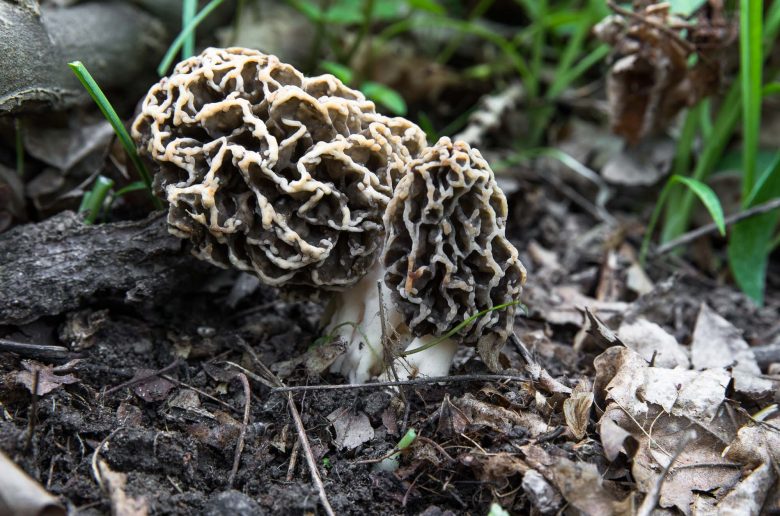
Appearance & habitat
Their characteristic, ribbed, honeycomb appearance usually makes them easily distinguishable from other mushrooms. However, there is a possibility of confusion with some very poisonous members of the Gyromitra respective Helvella family better known under their common names such as elfin saddle or false morel (see “confusion” below).
diameter: up to 8 cm
months: March – June (mainly April and Mai)
colours: brown, brown-yellow, grey-yellow
habitat: Alluvial forests, very site-loyal, also in parks, gardens, forest meadows, bark mulch. The morel often lives in the company of the bleach cup (Disciotis venosa), which are just as tasty!
smell: pleasant
characteristic: Fruiting body is unevenly honeycombed, hollow
consumption: cooked (poisonous raw)
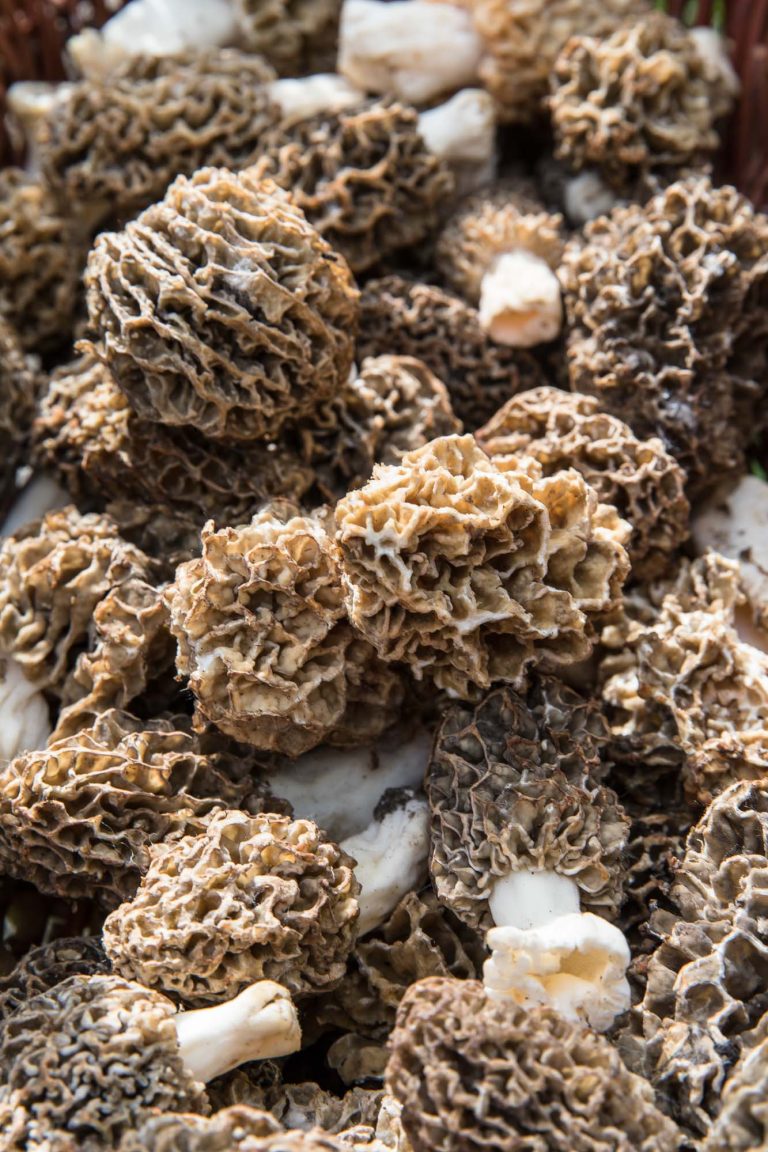
Strictly speaking, the term morel usually refers to different varieties of this mushroom, which often differ only slightly in their appearance. These include the thicker-footed Morchella crassipes, variations as the Morchella umbrina or the roundish Morchella rotunda. All are equal in taste and many authors do not distinguish between them.
Only harvest mushrooms that you can identify with 100% certainty! The consequences can be life threatening if you are wrong. If you have the slightest doubt: do not eat the mushroom! This is not a mushroom guide! For correct identification consult a mushroom expert.
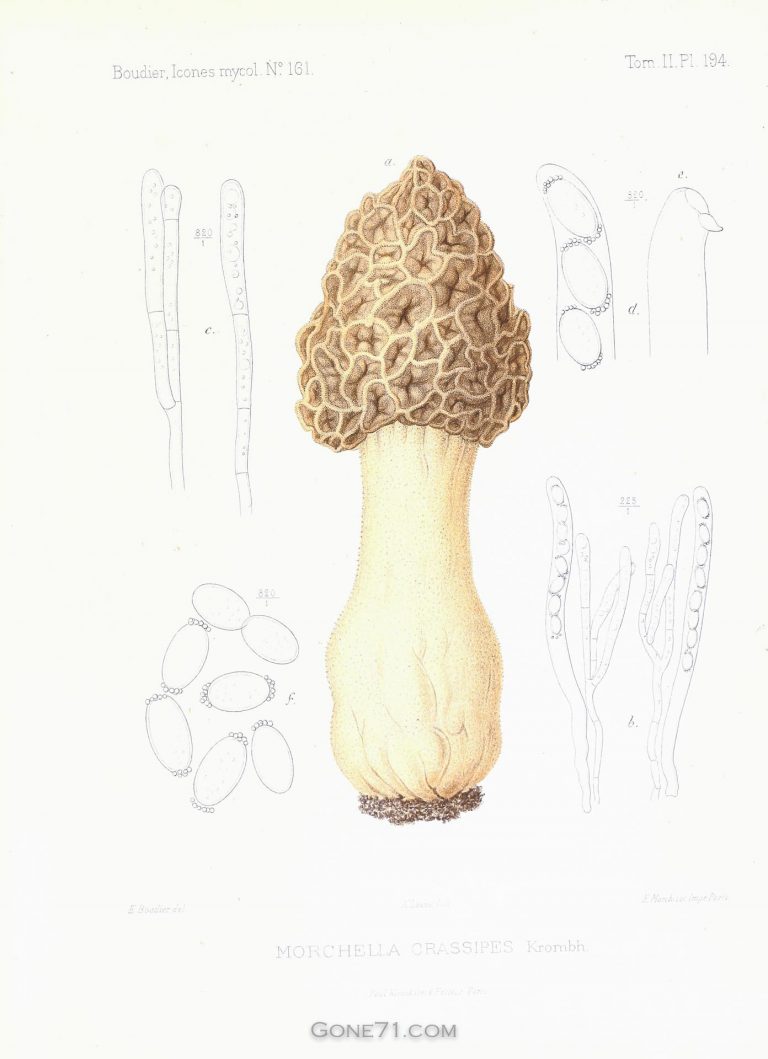
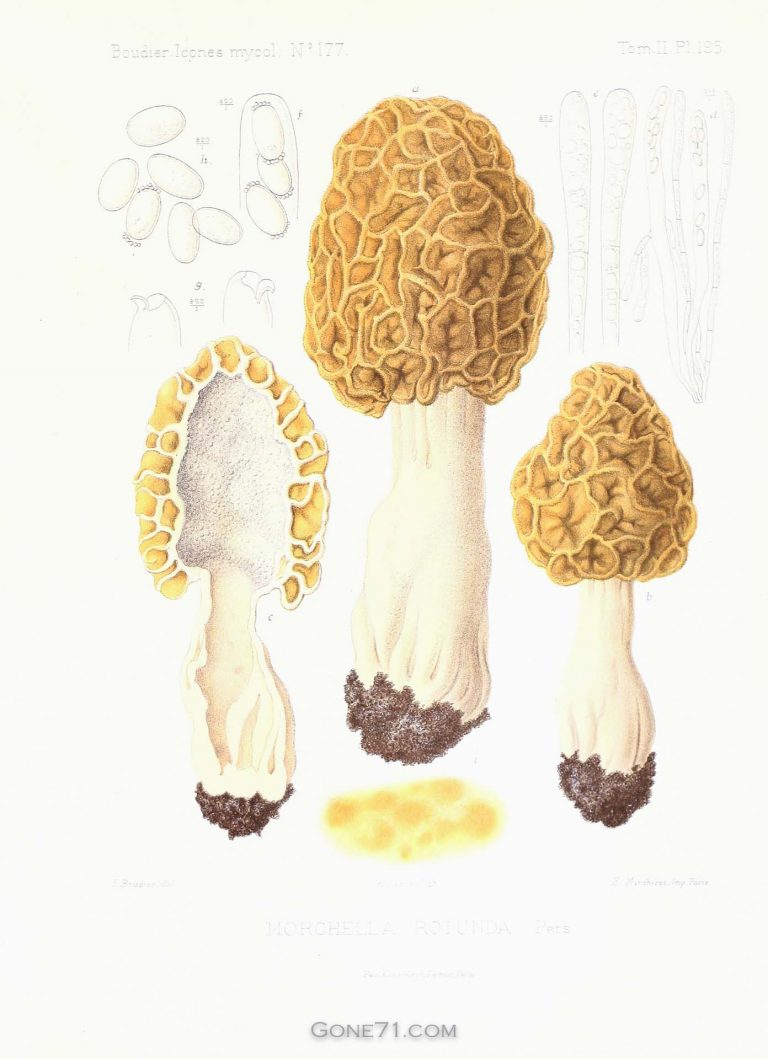
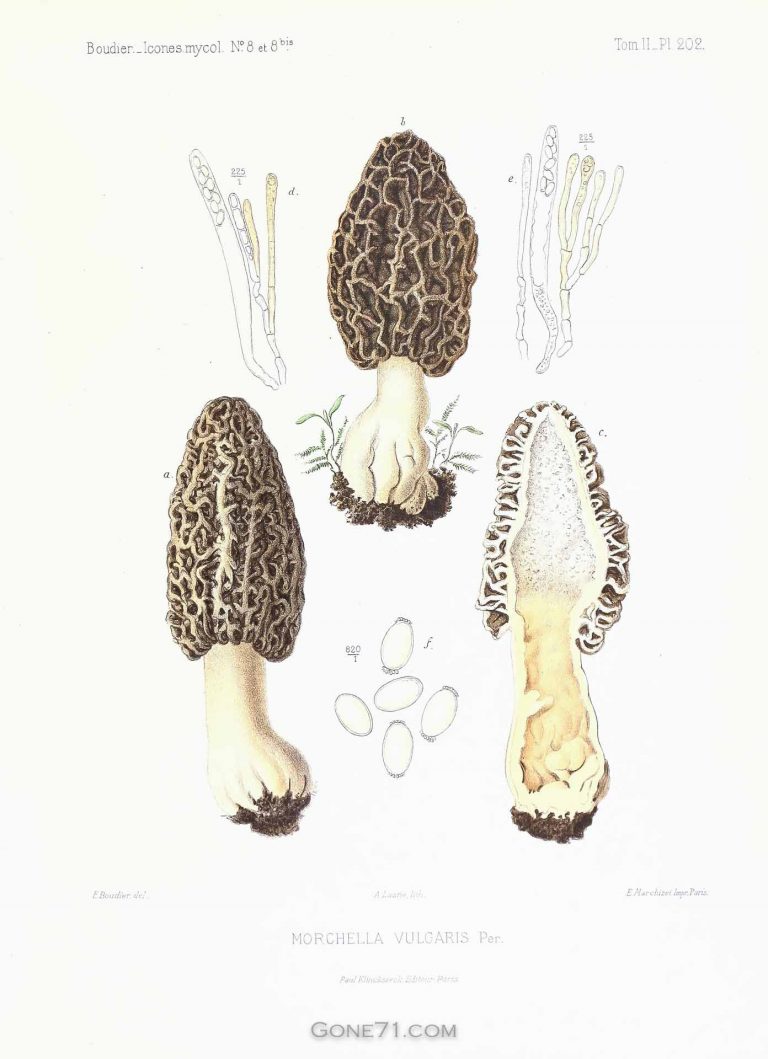
Confusing morels with other species
There is a possibility of confusion, especially with the highly poisonous False Morel (Gyromitra esculenta) and some other representatives from the Gyromitra and Helvella family. Due to the high gyrometrine content in many those poisonous doppelganger, such a mix-up can be deadly. Even attempts to taste it in its raw state are considered dangerous. While much of this poison is lost during the cooking process, remaining amounts can still cause severe poisoning. Anyone who would like to collect morels should be absolutely sure when distinguishing between morels and poisonous species.
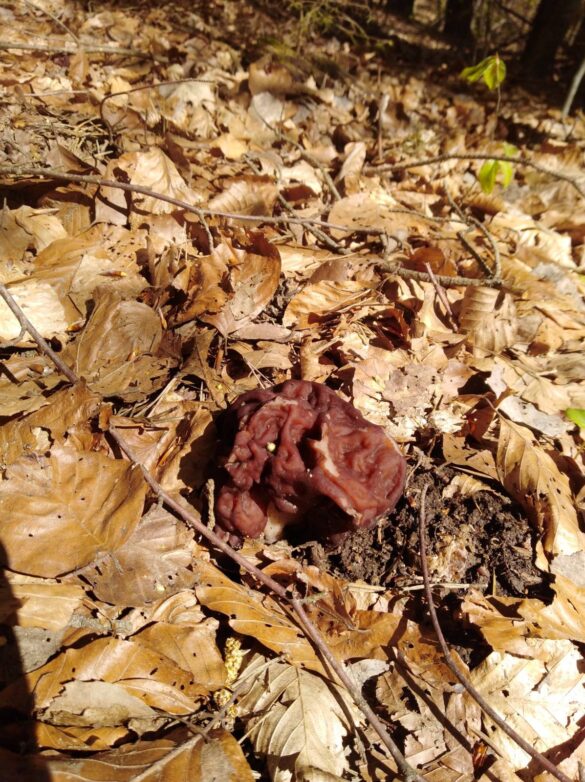
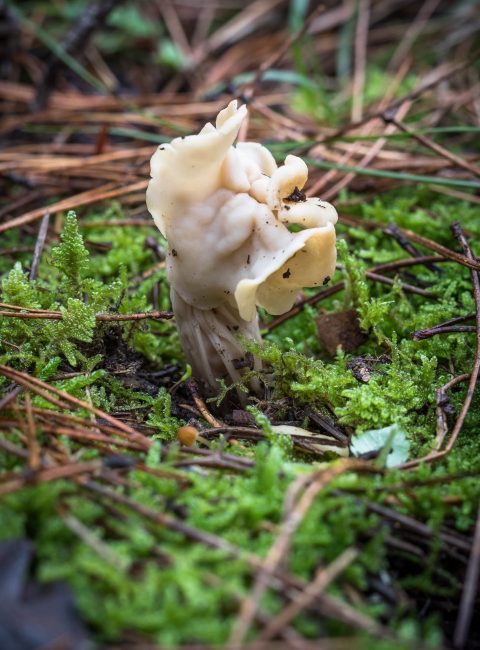
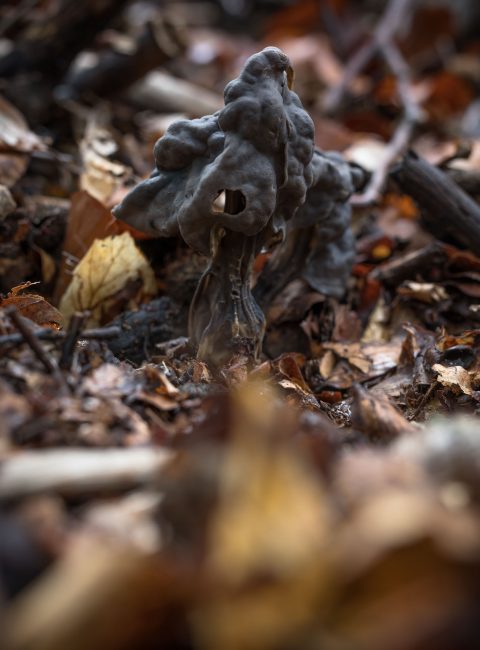
Morels, poison & the Morchella Syndrom
In their raw state, morels are poisonous and lead to gastrointestinal disorders. A sufficient cooking time of 5 to 10 minutes at at least 80° C should therefore be taken into account in further processing.
Another very rare intolerance is the so-called “Morchella Syndrome”. Symptoms include nausea, gastrointestinal problems, disorientation, balance disorders or blurred vision. The cause of these mild symptoms of poisoning has not yet been fully clarified. Morels should therefore not be consumed in large quantities at the beginning. If intolerance occurs repeatedly, consumption should be avoided altogether.
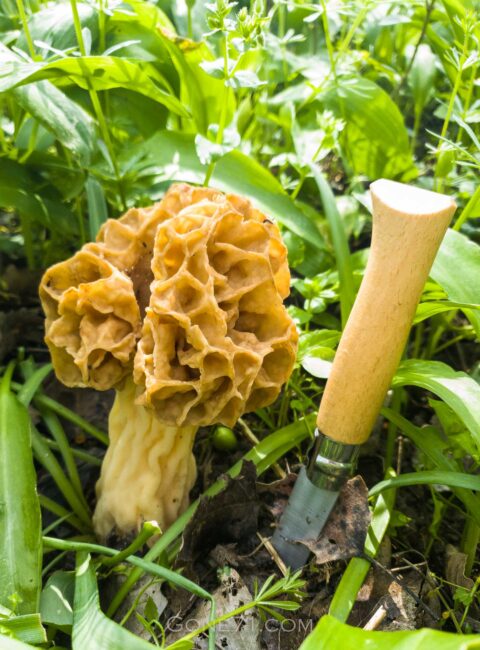
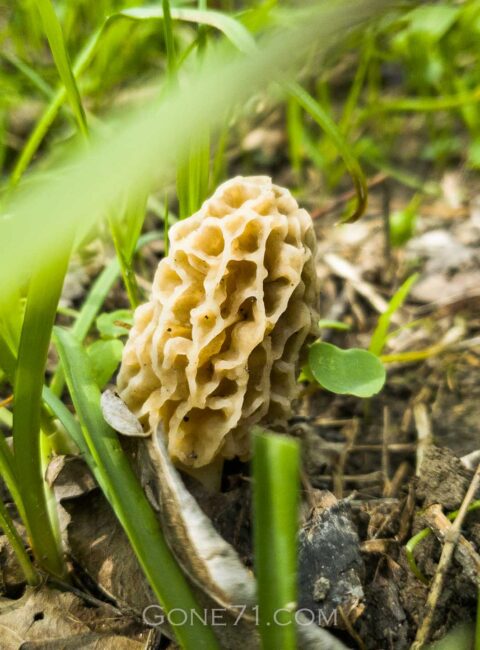
Cleaning morels
Its irregular surface is best cleaned of sand and forest debris by tapping it lightly or using a brush. It is best to halve the hollow trunk lengthwise in order to also examine the inside for dirt and unwelcome residents. Depending on further processing and contamination, the mushrooms can also be boiled for a few minutes to clean them, until the remaining dirt settles on the bottom of the pot.
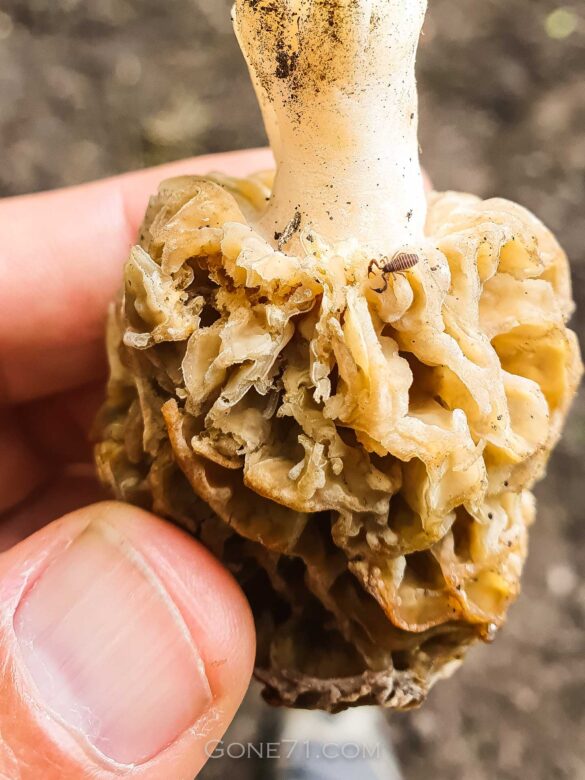
Morels in the kitchen – a delicatess
Already valued by the Romans, numerous preparation methods can also be found in the Middle Ages and especially in the cookbooks of bourgeois cuisine from the 18th and 19th centuries. Small, not yet fully ripe fruit bodies are particularly aromatic. Some have even compared their slightly earthy taste to truffles. In any case, fresh morels are a welcome change in the seasonal menu after winter. They are offered for sale dried and are also traded fresh locally in season.
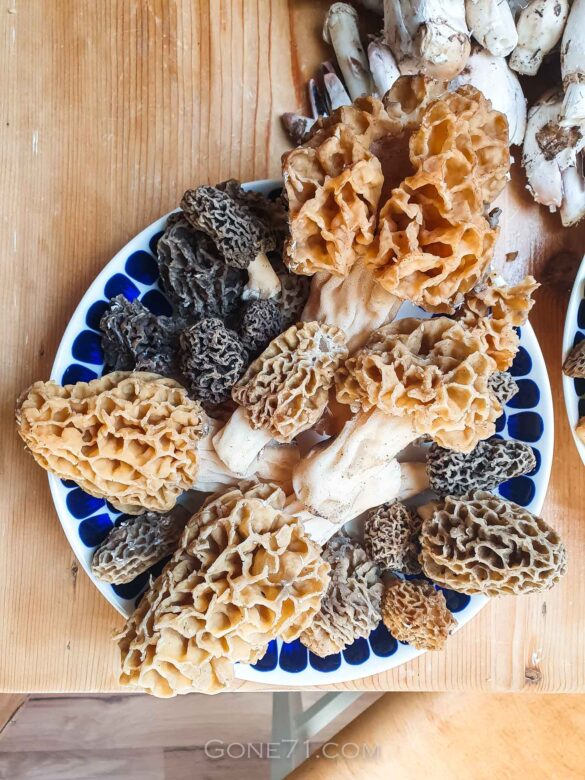
Cultivating morels
There is a saying that whoever manages to grow morels becomes a millionaire. In principle, morels are not cultivated or only cultivated with great effort. For the commercial market, therefore, the cultivation of morels has so far hardly been worthwhile. However, a Danish research duo seems to be initiating a paradigm shift here. According to their own statements, they have developed a method to breed morels in an economically viable way. A claim that we will follow with excitement over the next few years. However, it will probably be a while before you can order your own grow kits for your basement.
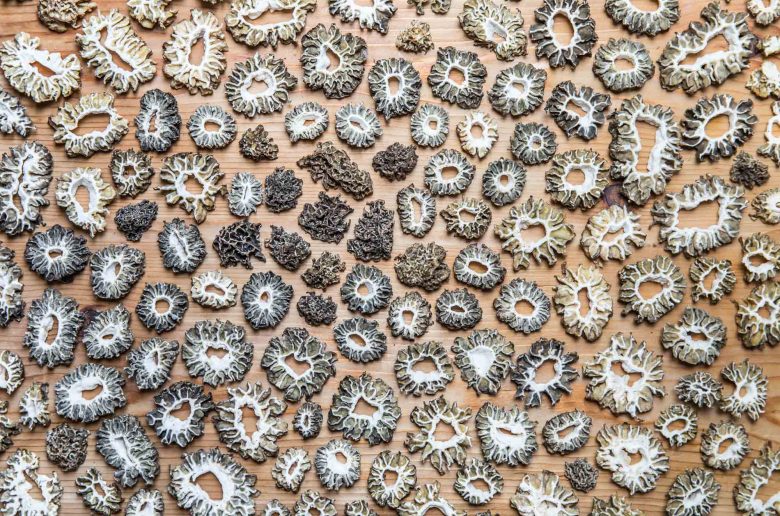
Like all morels, the common morel is one of the most expensive of all edible mushrooms. Due to their intense taste, morels are ideal for processing in sauces. Those who do not necessarily value fresh mushrooms can easily bridge the relatively short morel season with dried specimens.
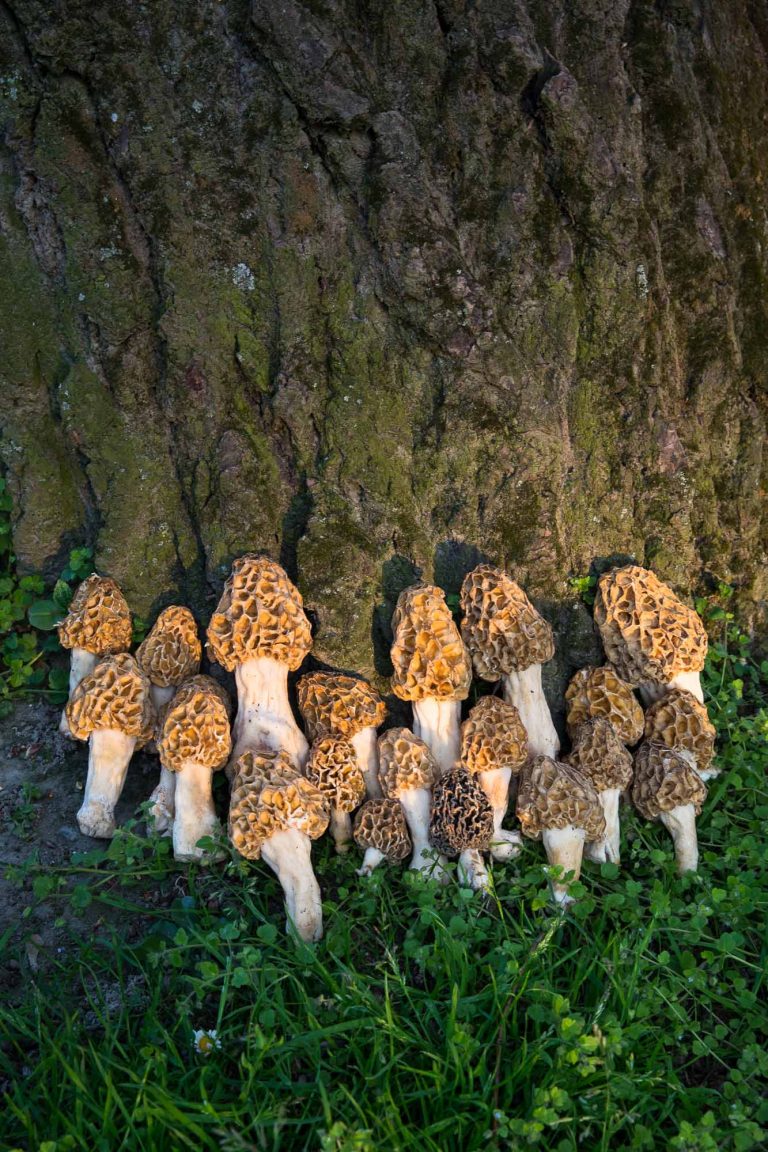
Sauteed Morels Recipe
Morels already have a strong taste of their own that is best preserved. Since you cannot eat them raw, cooking them in one or the other way is key. Keep in mind that morels consist largely of liquid and lose a lot of size when cooked. The stems are only processed directly in young specimens. As a rule, however, they are left out entirely or cut into thin strips, as they have a longer cooking time than the actual fruiting body.
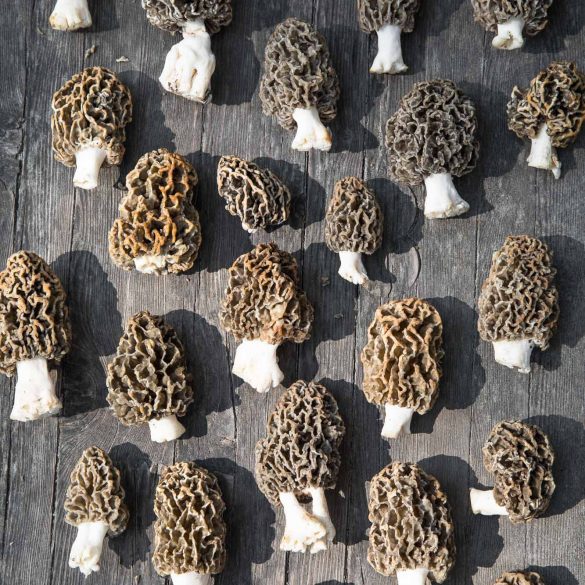
Sauteed Morels
Ingredients
- Morels – 250g fresh morels
- Olive oil or butter – 2 Tbsp.
- Shallot (minced) – 2 small
- Salt – on demand
- Pepper – on demand
- White wine – 3 Tbsp.
Instructions
- Heat 2 tablespoons butter or alternatively olive oil in a pan
- Add the chopped morels and season with salt and pepper
- Stir frequently when the mushrooms start to lose their liquid.
- Add the minced shallots after 4 to 5 minutes. If you like, you can also add garlic at this step. However, we find that morels have a very fine taste of their own, which is pushed into the background by the garlic.
- Stir until the liquid has almost completely evaporated
- The morels are ready when they are nice and tender.
- In case the water is already gone before the morels are done, add liquid a tablespoon at a time until they are done.
- If you want, you can round off the dish with white wine. To do this, add 2 – 4 tbsp. white wine, stirring constantly, until the liquid has been absorbed.
Notes
Sautéed morels make a great main course when available in large quantities. With a slice of homemade bread, they offer an outstanding meal. Of course, they can also be served as an accompaniment to meat, asparagus, rice and the like.
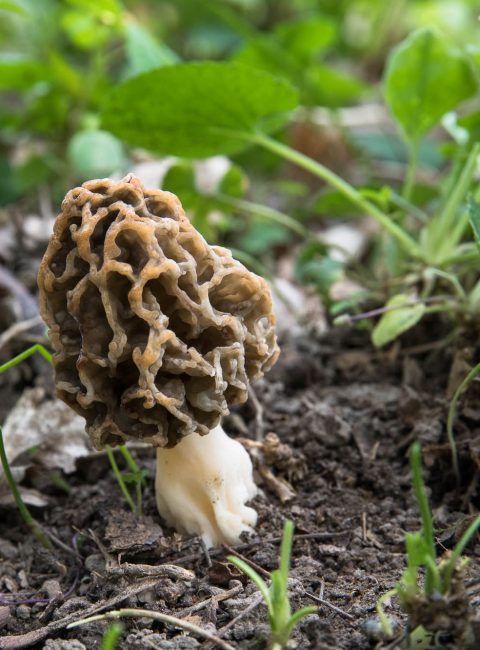
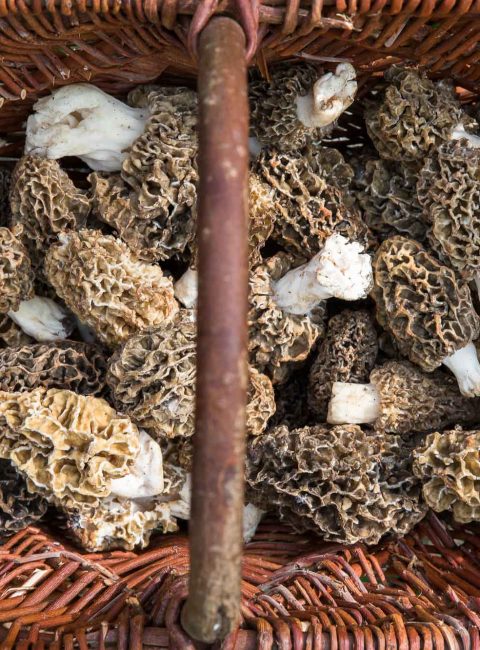
Find some inspiration in other mushroom recipes
We have compiled this overview with the best of knowledge and belief, but do not claim to be complete and reserve the right to make errors.
Learn more about poisonous mushrooms and mushroom poisons here
↓↓↓
